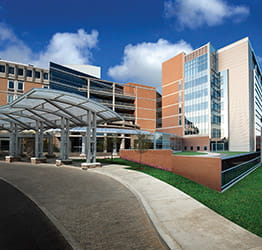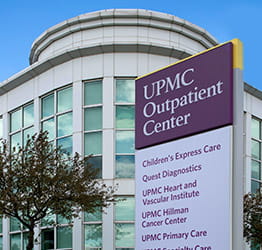On this page
What Is Papillary Breast Cancer?
Papillary breast cancer is a rare, slow-growing type of invasive breast cancer that starts in your milk ducts. It typically responds well to treatment and rarely spreads to other parts of your body.
What are the stages of papillary breast cancer?
Like other types of breast cancer, doctors use a standard system to determine the stage of papillary breast cancer.
Stages include:
- Stage 0 — The cancer is noninvasive.
- Stage I — Cancer cells have appeared in a duct or lobule and have invaded nearby tissue but have not spread beyond the breast.
- Stage II — The tumor is between .75 inch and 2 inches (2 cm to 5 cm) and may have spread to lymph nodes under the arm. Or the tumor is larger than 2 inches (5 cm) but has not spread to the lymph nodes under the arm.
- Stage IIIA — The tumor has spread to lymph nodes behind the breastbone but has not grown into the chest or skin.
- Stage IIIB — The cancer has spread to the chest wall or breast skin and may have spread to the lymph nodes.
- Stage IIIC — The cancer has spread to the chest wall or breast skin, or has spread to the lymph nodes above or below the collarbone, axillary (armpit), or breastbone.
- Stage IV (metastatic) — The cancer cells have spread beyond the breast to other organs.
How common is papillary breast cancer?
Papillary breast cancer is rare, accounting for 0.5% to 1% of breast cancer cases. It is most common in postmenopausal women in their mid-60s.
What causes papillary breast cancer?
Researchers aren’t sure what causes papillary breast cancer.
What are papillary breast cancer risk factors and complications?
Papillary breast cancer risk factors
You may be at higher risk of developing papillary breast cancer if you have:
- A family history of breast cancer.
- A history of alcohol use.
- A sedentary lifestyle with little exercise.
- Genetic changes, such as BRCA1 and BRCA2 mutations.
- Late menopause.
- Obesity.
- Periods that started early.
- Taken hormone therapy medications.
Complications of papillary breast cancer
Papillary breast cancer can be challenging to diagnose because tumors can be benign or malignant and may contain invasive and noninvasive cells. Even when a papillary breast tumor is benign, your doctor may recommend surgery to remove it due to the possible presence of invasive cells.
Papillary breast cancer can sometimes be mistaken for another condition called intraductal papilloma, which is a type of noncancerous tumor.
Treatment side effects
You may experience side effects from your treatment for papillary breast cancer, including:
- Fatigue.
- Joint pain.
- Menopause symptoms.
- Nausea.
- Surgical side effects.
- Vomiting.
- Weight gain.
How can I prevent papillary breast cancer?
There is nothing you can do to prevent papillary breast cancer.
Back to top
What Are the Signs and Symptoms of Papillary Breast Cancer?
Symptoms of papillary breast cancer are similar to other types of breast cancer and may include:
- A change in the size or shape of your breast.
- A dimpled, puckered, or "orange-peel" appearance of your skin.
- A lump or thickening on your breast or under your arm, which could be painless, firm, or fixed.
- A nipple that turns inward (retracts).
- Bloody or fluid discharge from your nipple.
- Breast or nipple pain.
- Red or swollen skin on your breast, nipple, or areola (the dark circle of skin around your nipple).
- Swollen lymph nodes under your arm or near your collarbone.
When should I see a doctor about my papillary breast cancer symptoms?
If you notice symptoms of breast cancer, you should schedule an appointment with your doctor as soon as possible. Early diagnosis and treatment can improve your chances of survival.
Back to top
How Do You Diagnose Papillary Breast Cancer?
To diagnose papillary breast cancer, your doctor will ask about your symptoms, perform a physical exam, and order imaging tests and a biopsy.
What to expect during your visit
If your doctor suspects papillary breast cancer, they will:
- Ask about your symptoms.
- Ask about your family history of breast cancer.
- Perform a physical exam.
- Order a biopsy to learn about the type of cancer you have.
- Order imaging tests.
- Review your health history and medications.
Tests to diagnose papillary breast cancer
Your doctor may order diagnostic imaging studies of your breast or other areas of your body, including:
- 3D mammogram (tomosynthesis) — A safe, noninvasive x-ray of your breast tissue. Your doctor may use computer-aided detection (CAD) software, which highlights abnormalities in your breast tissue.
- Chest x-ray — A painless, noninvasive test that creates an image of your chest and lungs.
- CT scan — A painless, noninvasive test that uses x-ray technology to capture multiple cross-sectional images of organs, bones, and tissues inside your body.
- Magnetic resonance imaging (MRI) — A safe, noninvasive imaging test that uses a magnetic field and radio waves to produce highly detailed images of breast tissue without radiation exposure.
- PET scan — Positron emission tomography (PET) is an imaging scan that shows abnormal cell activity within your body's tissues.
- Ultrasound (sonography) — A painless, noninvasive test that uses high-frequency sound waves to produce real-time images of your breast tissue.
Breast cancer biopsy and pathology testing
If your imaging tests show a suspicious area of breast tissue, your doctor will perform a biopsy. During a biopsy, your doctor will remove a sample of tumor tissue and send it to the lab for testing.
Types of breast biopsies include:
- MRI-guided breast biopsies — Use MRI guidance to precisely locate suspicious areas of breast tissue so they can be removed to check for signs of cancer.
- Stereotactic breast biopsies — Use mammography guidance to precisely locate suspicious areas of breast tissue so they can be removed to check for signs of cancer.
- Ultrasound-guided breast biopsies — Use ultrasound guidance to precisely locate suspicious areas of breast tissue so they can be removed to check for signs of cancer.
A doctor called a pathologist will perform tests to determine whether your cancer has HER2 proteins or hormone receptors. Your test results will give your doctor more information about the type of breast cancer you have, which will be used to guide your treatment.
Papillary breast cancer prognosis
Papillary breast cancer is typically slower-growing than other types of breast cancer, responds well to treatment, and rarely spreads to other areas of your body.
What is the prognosis for papillary breast carcinoma?
Your prognosis after a papillary breast cancer diagnosis will depend on the type and stage you have, as well as your overall health, response to treatment, and other factors. Your doctor will discuss your prognosis with you.
Is papillary breast cancer serious?
Although papillary breast cancer has a higher overall survival rate and better prognosis when compared to other types of breast cancer, it is a serious condition. Early diagnosis and treatment can improve your chances of survival and reduce your risk of complications.
Back to top
How Do You Treat Papillary Breast Cancer?
The goals of papillary breast cancer treatment are to remove or destroy the cancer cells and reduce the risk of recurrence.
Treatment options may include:
Surgery for papillary breast cancer
Surgery may be an option for papillary breast cancer that has not spread beyond the breast or nearby lymph nodes.
Your doctor may recommend surgical procedures, including:
Breast cancer surgical procedures
- Lumpectomy — Also known as breast-conserving surgery or a partial mastectomy, a lumpectomy is a surgical procedure to remove the part of your breast with a cancerous tumor and some healthy surrounding tissue.
- Mastectomy — A surgical procedure to remove the entire breast. When both breasts are removed, it is known as a double mastectomy.
Lymph node surgical procedures
- Axillary lymph node dissection — Surgery to remove all or a group of lymph nodes in the axilla (armpit), if your sentinel lymph node biopsy is positive for cancer.
- Sentinel lymph node biopsy — A minimally invasive procedure to remove the sentinel (main) lymph node in the axilla (armpit) to test it for cancer. It is performed to determine if cancer has spread to your lymph nodes.
Radiation therapy for papillary breast cancer
Radiation oncology is a medical specialty that uses radiation therapy to kill cancer cells. Radiation therapy for breast cancer involves using high-energy x-rays to precisely target your tumor. It may be used after surgery or in combination with other therapies to treat papillary breast cancer.
Medical oncology for papillary breast cancer
Medical oncology for breast cancer involves using different types of anti-cancer medications to slow or stop breast cancer growth.
Your doctor may recommend treatments including:
Chemotherapy for papillary breast cancer
Chemotherapy is a breast cancer treatment that uses medications that travel through your bloodstream to kill cancer cells throughout your body. It may be used by itself or in combination with other treatments.
Your doctor may recommend chemotherapy:
- After surgery to kill any remaining cancer cells.
- Before surgery to shrink the tumor so it can be removed more easily.
- If your cancer has spread to other areas of your body.
Hormone therapy for papillary breast cancer
Hormone therapy is used to treat hormone receptor-positive breast cancers, including estrogen receptor-positive and progesterone receptor-positive types of papillary breast cancer. Hormone therapy blocks estrogen from fueling breast cancer growth and may also lower estrogen levels in your body.
Treatment options may include:
- Aromatase inhibitors (AIs) — Stop estrogen production in your body. Medications include letrozole, anastrozole, and exemestane.
- Luteinizing hormone-releasing hormone (LHRH) agonists — Prevent ovaries from making estrogen. Medications include goserelin and leuprolide.
- Selective estrogen receptor degraders (SERDs) — Used in post-menopausal women to prevent estrogen from connecting to cancer cells and break down estrogen receptors. Medications include fulvestrant and elacestrant.
- Selective estrogen receptor modulators (SERMs) — Used in pre-menopausal women to prevent estrogen from connecting to cancer cells. Medications include tamoxifen and toremifene.
Targeted therapy for papillary breast cancer
Targeted therapies work similarly to antibodies produced naturally by your immune system. These antibodies identify and attack foreign cells, including cancer cells. If papillary breast cancer cells have HER2 proteins, targeted therapy may be an option to slow or stop cancer growth.
Papillary breast cancer clinical trials
UPMC experts participate in national, multicenter clinical trials that study promising treatments for papillary breast cancer.
This means you can take part in research that has the potential to enhance breast cancer care and access groundbreaking treatments years before they are available to the public. Your doctor will let you know if a clinical trial might be an option for you.
Why choose UPMC for papillary breast cancer care?
When you choose UPMC for papillary breast cancer care, you will receive:
- Comprehensive breast cancer expertise — The breast cancer experts at UPMC provide state-of-the-art care for every form of breast cancer at every stage of the disease.
- Personalized, collaborative care — Our surgical, medical, and radiation oncologists work together to plan the best course of therapy for you.
- Supportive services tailored to your needs — Our approach to breast cancer care honors your preferences by blending advanced clinical methods with supportive services for the best possible results.
Back to top
By UPMC Editorial Staff. Last reviewed on 2025-09-18.
















